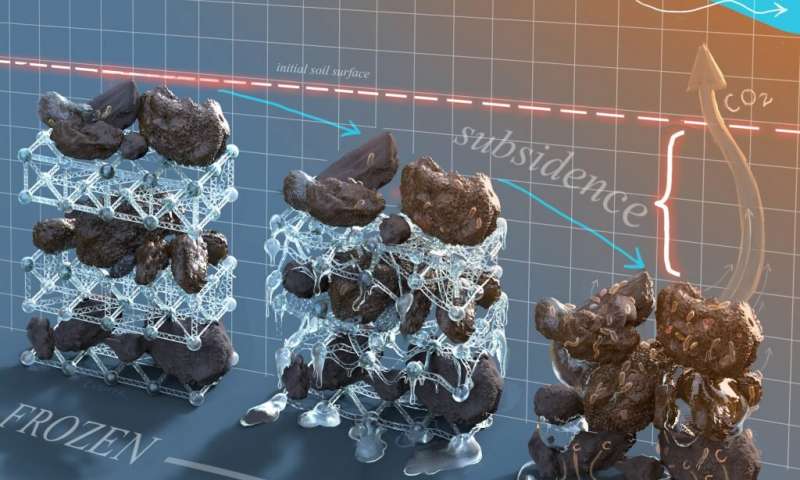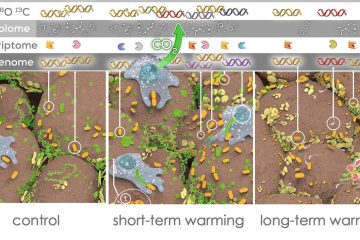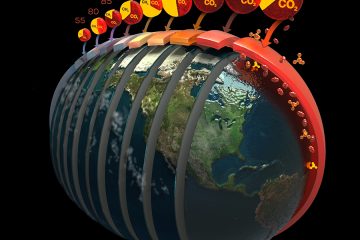Carbon from thawing permafrost released to the atmosphere at a higher rate than thought

Ecoss researchers show that more carbon is being released from thawed permafrost than previously thought. A new paper published this month in Nature Geoscience introduces a new way to track soil carbon in permafrost, which changes the understanding of how environmental change influences ecosystem carbon storage. The experiment builds on a long-term permafrost tundra warming study Schuur and collaborators are doing in Alaska.
Read the publication here and the NAU news story here.

Thawing permafrost affects plant and soils in tundra ecosystems, and ultimately the storage of carbon in permafrost soils. The surface of tundra subsides as ice in permafrost melts and drains. This can mask the loss of soil carbon through time that occurs as a result of soil microbial activity converting soil organic matter into greenhouse gases carbon dioxide and methane. Accounting for ground subsidence as a result of thaw revealed that substantial quantities of soil carbon were loss both directly to the atmosphere as carbon dioxide, but also dissolve in water that drained from this site. Soil carbon loss from permafrost ecosystems that ends up in the atmosphere at greenhouse gases can ultimately accelerate climate change.
Credit: Victor O. Leshyk, Center for Ecosystem Science and Society, Northern Arizona University


